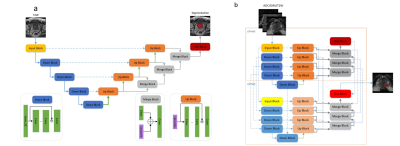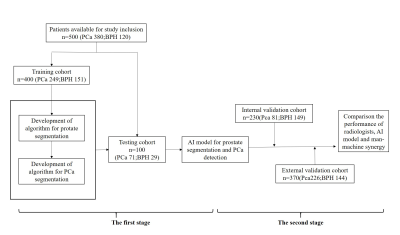guiqin LIU1, Guangyu Wu1, yongming Dai2, Ke Xue2, and Shu Liao3
1Radiology, Renji Hospital,Shanghai Jiaotong University School of Medicine, Shanghai, China, 2United Imaing Healthcare, Shanghai, China, 3Shanghai United Imaging Intelligence Co. Ltd, Shanghai, China
1Radiology, Renji Hospital,Shanghai Jiaotong University School of Medicine, Shanghai, China, 2United Imaing Healthcare, Shanghai, China, 3Shanghai United Imaging Intelligence Co. Ltd, Shanghai, China
Based
on multi-center cohorts, AI model could independently diagnose PCa with
remarkable false negative and sensitivity. For the diagnosis performance, although
AI performed suboptimal, the human-led synergy method performed equivalent to
clinical assessment with improved consistency.

Artificial intelligence architecture. a.
Small Vnet (sVnet), based on V-Net with modifications, composed of one input
block, four downsampling blocks (Down
Block), four upsampling blocks (Up
Block), four merge blocks (Merge
Block) and one output block. The horizontal arrow denotes the transfer of
residual information from the early stage to the later
stage. b. Multi-small Vnet (msVnet), where two sVnets are cascaded.
